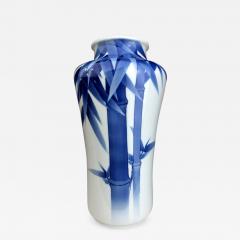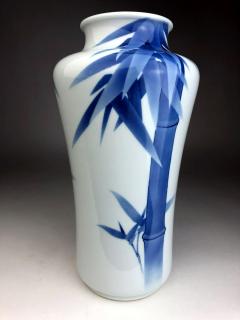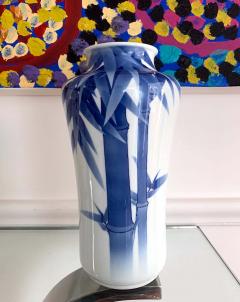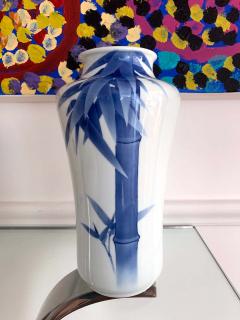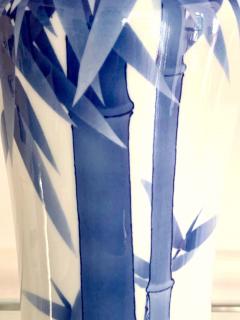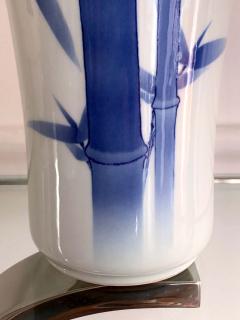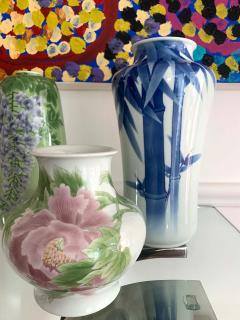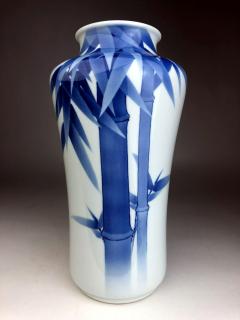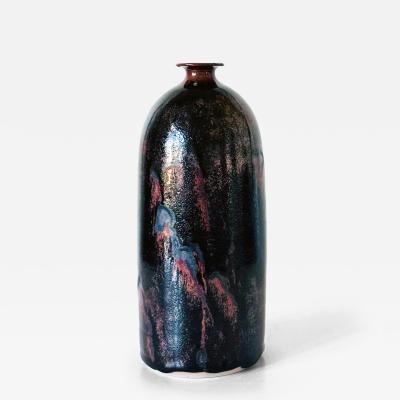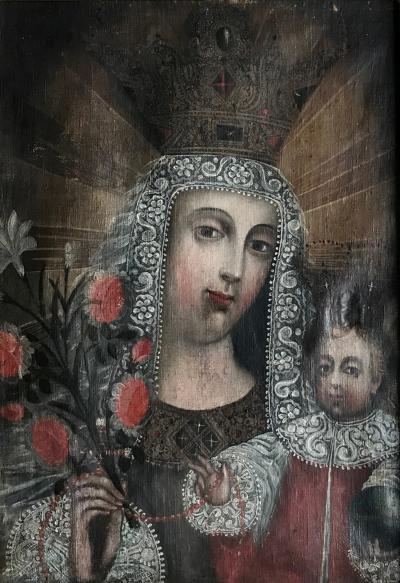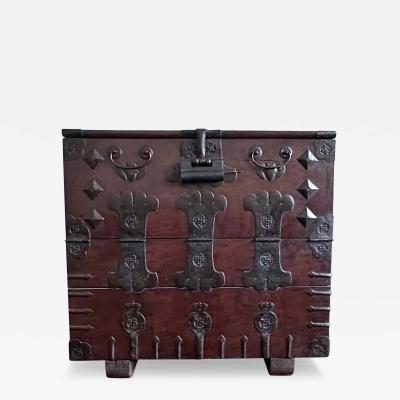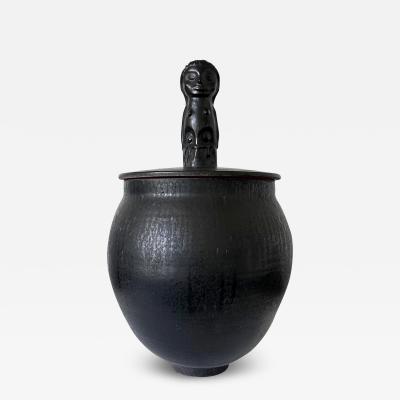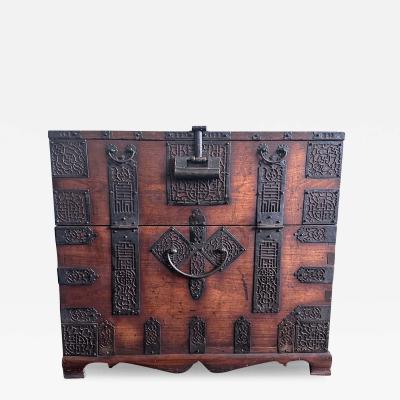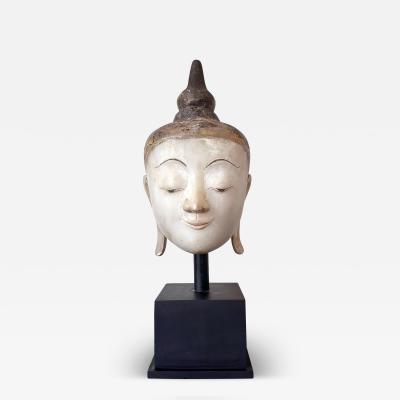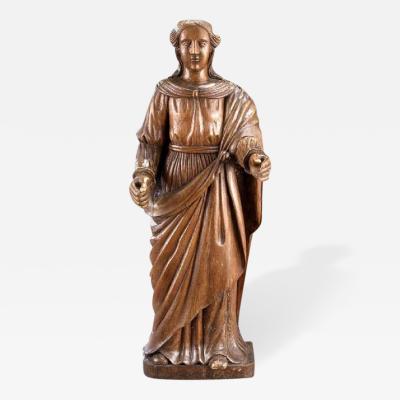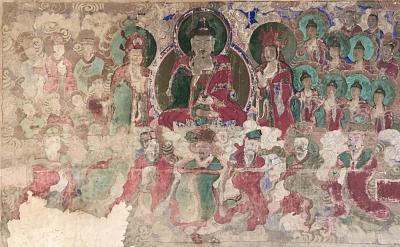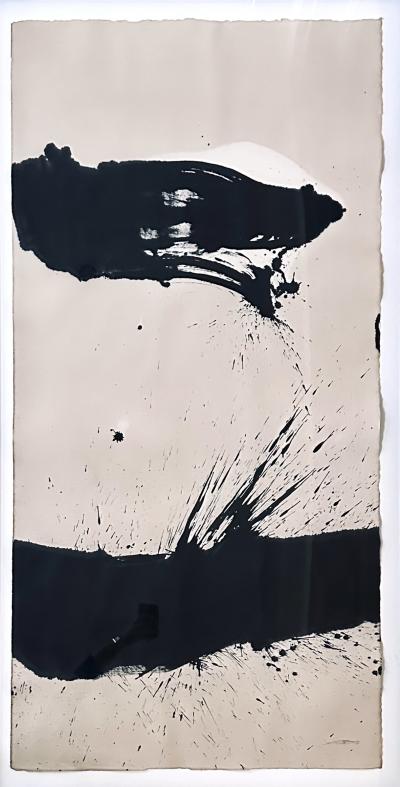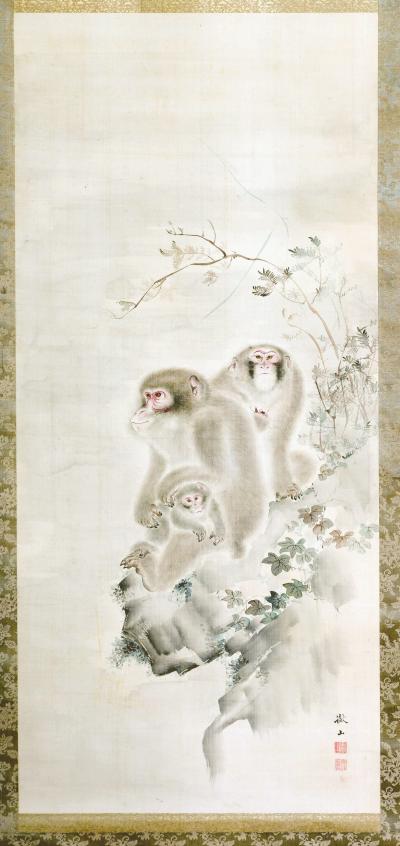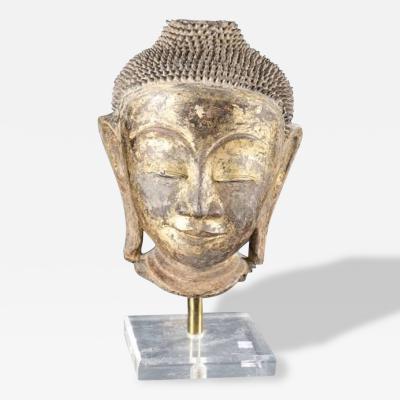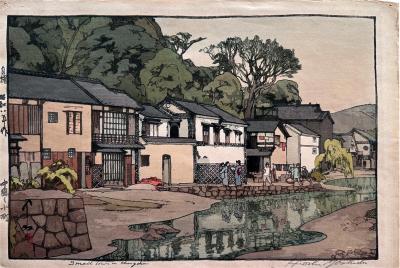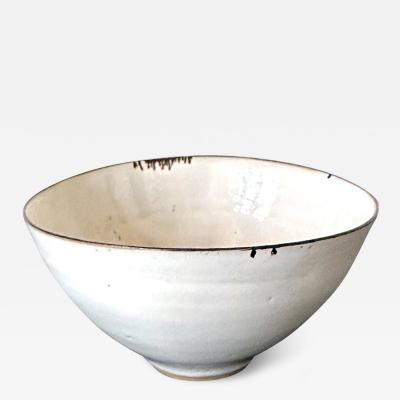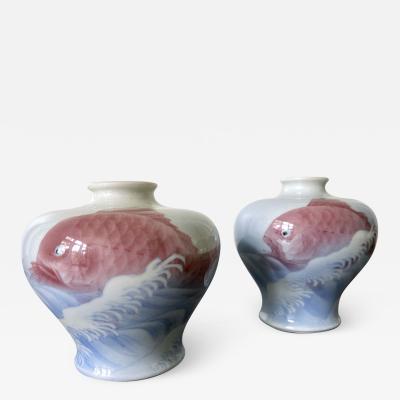Japanese Porcelain Vase Makuzu Kozan Meiji Period
-
Description
A striking blue and white vase from the studio of Japanese Potter Makuzu Kozan, also known as Miyagawa Kozan (1842–1916), one of the most established and collected ceramist from Meiji Period. Born as Miyagawa Toranosuke, Kozan established his pottery studio in Yokohama circa 1870s and later became one of the appointed artist to the Japanese Imperial household. His work was exhibited in many international fairs that the Meiji government participated at the turn of the century and won many grand prizes.
Of a relative large size, this vase is decorated with underglaze cobalt blue using the novel technique developed by Kozan called Fuki-e (the blow painting). As a result, the bamboos appear took on a three dimensional quality as if appearing in a mist. Known as one of the most creative ceramists, circa 1887, Kozan started experimenting with new chemical colors from the West in the format of his porcelain glaze. New colors allowed him to create underglaze design that appeared bright, smooth and glossy. He even invented his own receipt of cobalt blue to achieve a much brighter yet softer shade, as evident on this vase. To create landscape that is realistic and dimensional, more common in the western paintings, he was inspired by the native Japanese ink painting technique developed around 1900 by Yokoyama Taikan (1868-1958) and Hishidan Shunso (1874-1911) called Morotai (Hazy style), and used cobalt blue on the porcelain like ink on paper. The fuki-e technique was demanding and uniquely featured in the works of Kozan studio.
The vase displays a classic elegant form and the bamboo decoration climbed the shoulder to reach the mouth rim, another characteristic of the Kozan's work. It was signed underneath in the artist's seal.
For a blue and white vases with nearly identical Bamboo decoration by Makuzu Kozan: see figure 71 on page 129 of "Sekai ni Aisa Reta ya Kimono" MIYAGAWA KOZAN MAKUZU WARE (Pottery BOOK, Japanese Edition) Published by Kanagawa Shimbun (2010) .
For reference on the technique described above, see Figure 2 of "Bridging East and West, Japanese Ceramics from the Kozan Studio" Walters Art Gallery. Emerson-Dell P.30. -
More Information
Documentation: Signed Notes: Signed and referenced Origin: United States Period: 1900-1919 Materials: ceramic Condition: Good. Fine condition with minimal wear Creation Date: 1890-1910 Styles / Movements: Bespoke, Asian, Traditional Incollect Reference #: 331554 -
Dimensions
H. 11.25 in; Diam. 6.25 in; H. 28.58 cm; Diam. 15.88 cm;
Message from Seller:
Tishu, based in Atlanta, GA, offers a diverse collection ranging from Neolithic art to 20th-century collectibles, with a focus on Mid-century design, Japanese and Korean art, Asian textiles, and Contemporary Aboriginal art. Driven by a passion for timeless beauty, the gallery is open by appointment only and offers works that span 5,000 years of history. Reach them at 305-400-0561 or tishu@tishugallery.com.
















